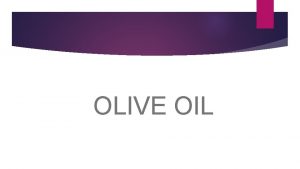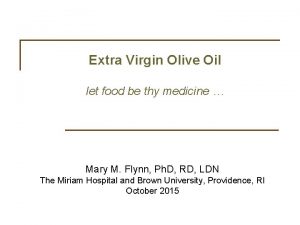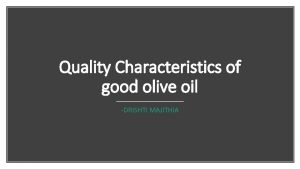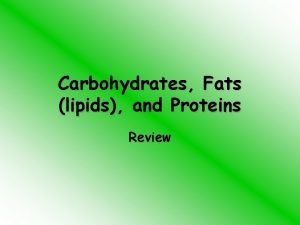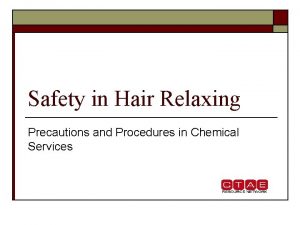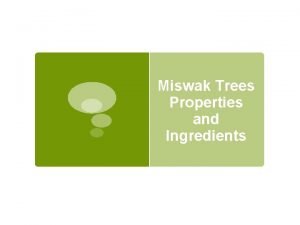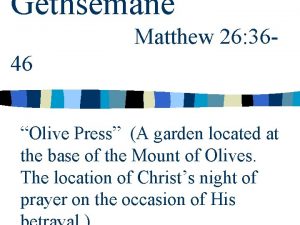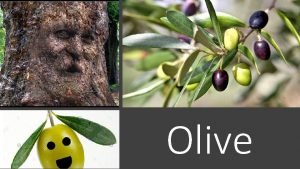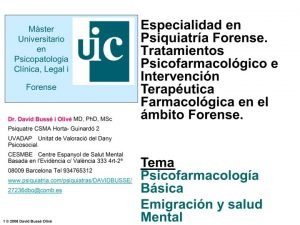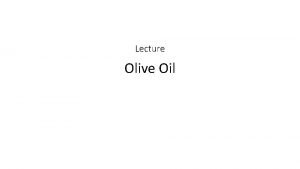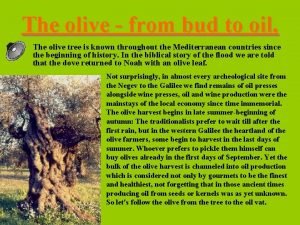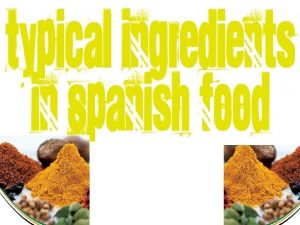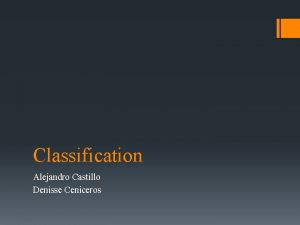OLIVE OIL CLASSIFICATION OF OLIVE OIL Olive oil
















- Slides: 16

OLIVE OIL

CLASSIFICATION OF OLIVE OIL Olive oil can be classified into eight types oil: Ø Extra virgin olive oil obtained with extraction processes using only mechanical priocedures. It has an acidity equal to or less than 0. 8. no organoleptic defects ; Ø Virgin olive oil obtained with using only mechanical procedures; introduces a smaller or equal acidity to 2. 0. present some organoleptic defects; Ø Lampante olive oil product in the same way of the previous oils; the acidity is higher than 2. 0. this type of oil cannot be used for food purposes;

CLASSIFICATION OF OLIVE OIL Ø Refined olive oil obtained through rectification of lampanti oils and subsequent refining. the acidity is less than or equal to 0. 3; Ø Olive oil composed of refined and virgin olive oils the acidity is lower than 1, 0; Ø crude olive pomace , refined olive pomace and olice oil pomace the first is obtained by extraction of the residue from the oil, the second is obtained by refining of the previous oil, and the last is pomace oil.

DETERMINATION OF ACIDITY A way to express free fatty acids is acidity. The reagents for analysis are: Water solution of KOH 0, 1 N for tritation Alcohol - ether mixture : 95% ethanol (v/v), two part of ethyl ether Phenolphthalein indicator

Analysis : Weigh from 0, 1 to 20 grams of substance , add 50 -150 ml of acool –ether mixture. Then neutralize precisely at the moment of use with the potassium hydroxide solution ( 0, 1 N) with the addition of 0, 3 ml of the phenolpthalein solution per 100 ml of mixture.

The potassium hdroxide may be prepared as follows. Bring to boil 1000 ml of ethanol with 8 grams of potassium hydroxide and 0, 5 grams of aluminium shavings and continue boiling under reflux for one hour. Then distill immediately. The mixture must leave for several days. Decant the supernatant liquid from the precipitate of potassium carbonate. The solution is ready for use.

The equipment including : Analytical balance 25 ml burette , graduated in 0, 05 ml 250 ml conical flask

Acidity : expressed as percentage of oleic acid Acidity as a percentage by weight is equal to: % = V x N x 282 / g (oil) x 10 V= the volume of titrated potassium hydroxide solution used, in millilitres g = the weight in grams of the sample N= KOH N/10= 0, 0282 g P. M. = 282

PEROXIDE VALUE The peroxide value is the quantity of those substances in the sample, expressed in terms of milliequivalents of active oxygen per kilogram, which oxidize potassium iodide under the operating conditions described. This value indicate the condition of the oil

Reagents Mixture of chloroform and glacial acetic acid(3: 2 of volume) Potassium iodide, saturated solution Sodium thiosulphate 0, 01 N Starch solution

Procedure The procedure consist of treatment of the test portion with the addition of chloroformglacial acetic acid mixture in a flask.

Determination of the composition and content of sterols, erythrodiol, uvaol by capillary-column gas chromatography

Sterols are a fraction of unsaponifiable fats in olives. The scope of method is the determination of indivudual and total sterols , uvaol and erythrodiol content of olive oils and olive-pomace oils. Helps to uncover fraud and is Is an index of genuinity of oils.

Principle : the oil is saponified with potassium hydroxide in ethanolic solution and the unsaponificable matter is extracted with ethyl ether. The mixture is transferred in rotavapor in wich chloroform is used as a solvent. The sterol , erythrodiol, uvaol are separated by thin-layer chromatography on a basic silica gel plate using aseluent a mixture of Hexaneethyl ether. at the same time suffer the same procedure a internal standard colled α-cholestanol. Finally bands of different fraction are Highlighted by fluorescein. Than the mixture is malted in opportune solvent , than is silanates and injected in capillary column gas chromatography.

Apparatus : • Flask fitted with a reflux condenser • Separator funnel • Rotavapor • Thin-layer chromatography with silica gel • Development room • Phone • Dichlorofluorescein nebulizer • Ulraviolet lamp

Reagents : • Internal standard ( α-cholestanol) at 0, 2 % in ethanol • Potassium hydroxide ethanolic solution , approcimately 2 N • Potassium hydroxide 0, 2 N • Sample for saponification : 5 g oil , 50 ml potassium hydroxide ethanolic solution , 0, 5 ml internal standard • dichlorofluoroscein. For make the basic solution add some quantity of alcoholic solution of KOH.
 Classification of olive oil
Classification of olive oil Ph of olive oil
Ph of olive oil Drishti majithia
Drishti majithia What macromolecules are in bread olive oil and pasta
What macromolecules are in bread olive oil and pasta Samaritans olive oil
Samaritans olive oil Significance of saponification value
Significance of saponification value Olive oil ior
Olive oil ior Olive oil relaxer timing chart
Olive oil relaxer timing chart Primary emulsion
Primary emulsion Neem tree miswak
Neem tree miswak Wyandanch middle school
Wyandanch middle school Olive press gethsemane
Olive press gethsemane Olive branch petition and common sense venn diagram
Olive branch petition and common sense venn diagram Qliance
Qliance Fire alarms olive branch
Fire alarms olive branch Little olive leaf
Little olive leaf David busse olive
David busse olive
